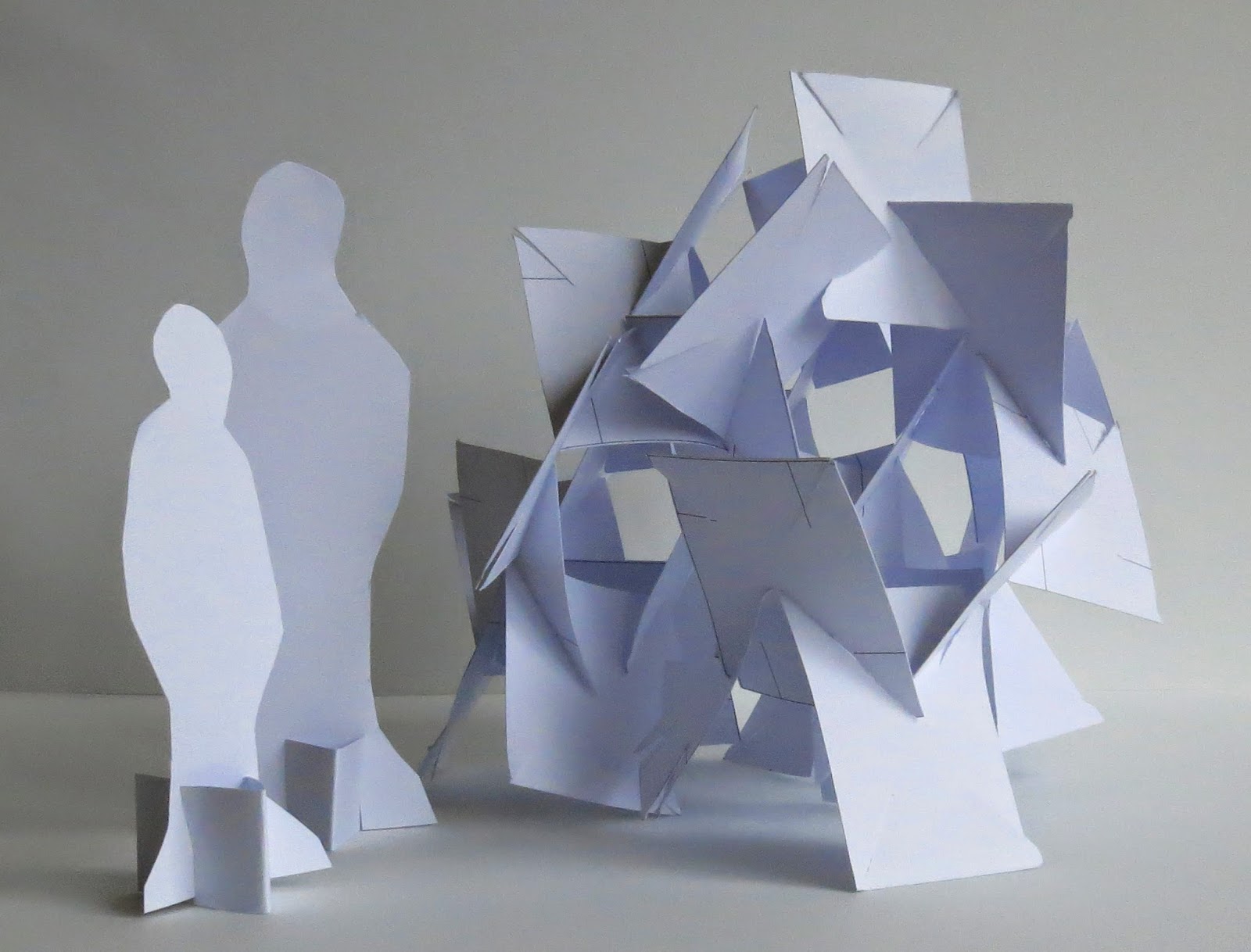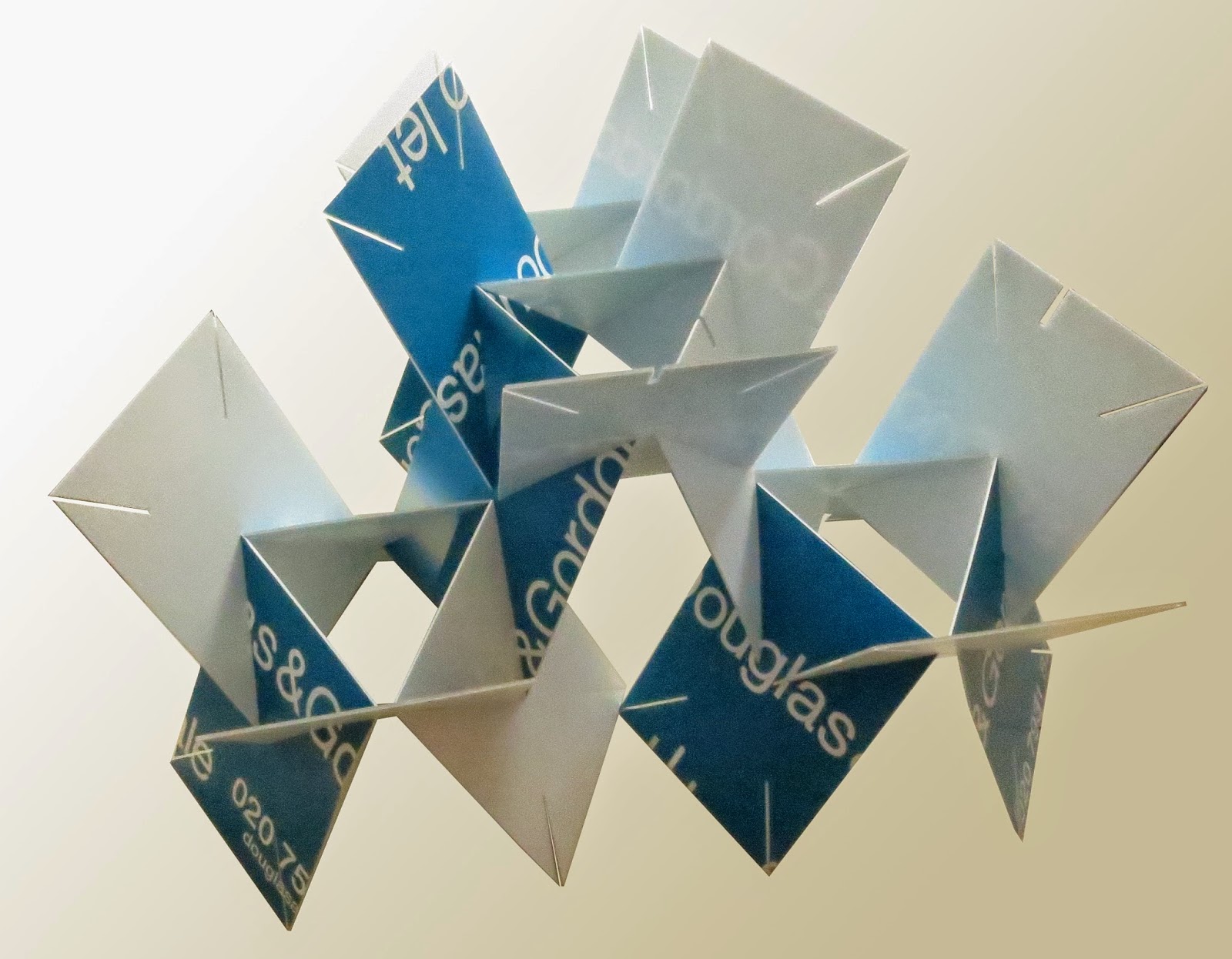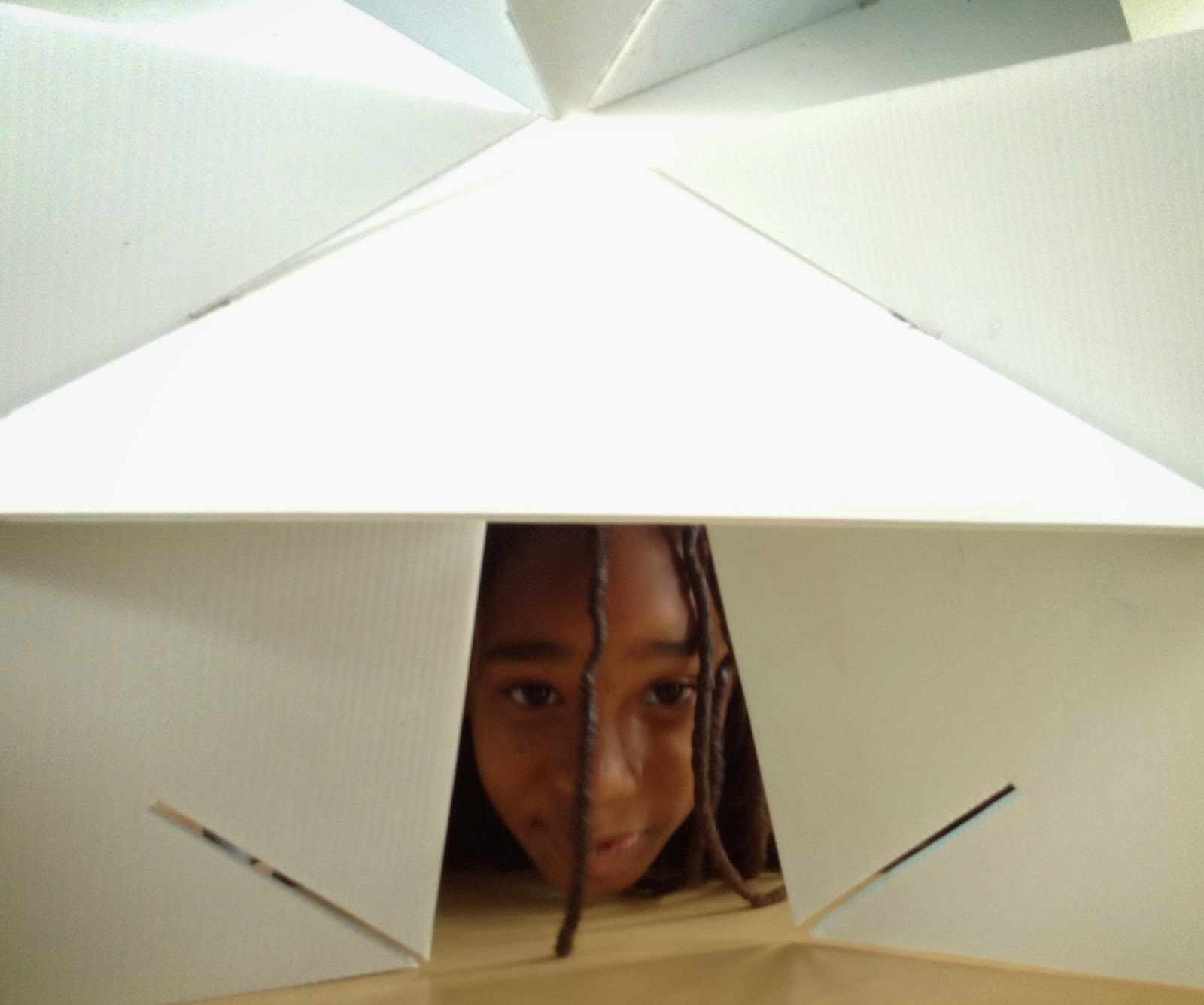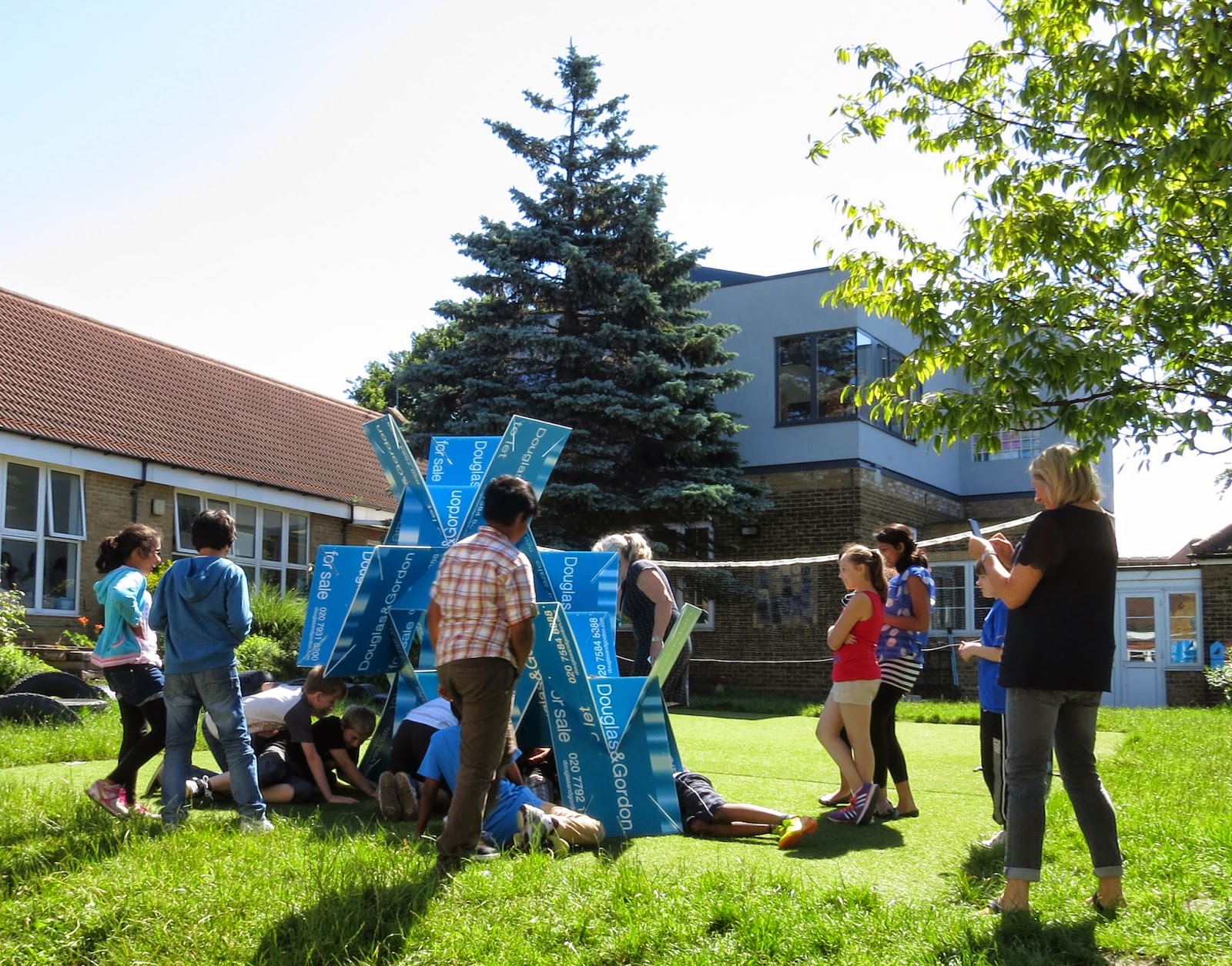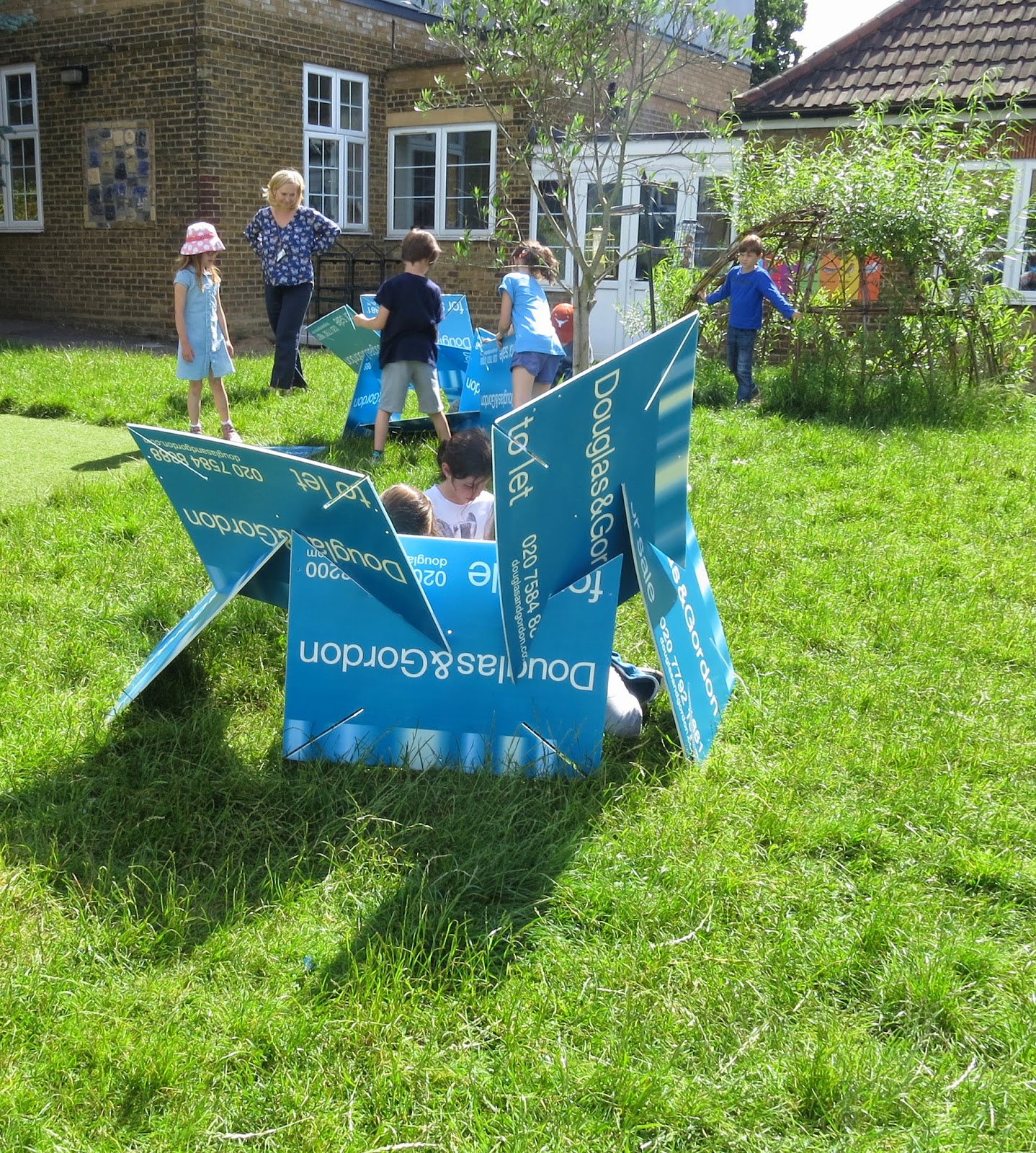In our Architecture for Kids workshops at Furzedown Primary School, we've been experimenting with more of our estate agent boards. The aim was to create a simple, non-conventional 3D form which could be used as an enclosure, or den. Minimal work to the boards was an advantage, so that the children could work with the material directly.
We trialed lots of options in the workshops with small scale card rectangles, creating different forms. This one below was based on the dodecahedron and only required holes drilling at the corners for connections.
 |
| Playing with small scale card pieces and a stapler. Keeping it simple. |
Working with the real boards, it became clear that the material would not support the structure at the base, in the same way as the card model did. Making it in to a complete sphere enabled the object to work as a structural whole and keep its form a lot more easily. Even if it looked a bit floppy at times, it could easily be used as a den, and when rolled about in the school courtyard it worked efficiently to retain its original form.
 |
| The finished structure. |
It was a bit of a surprise to realise how big it was, despite the scaled card people in the model. It has a lot of presence in the school courtyard, especially infront of small kids.
 |
| An accidental photo climbing in to the ball, but it looks fun. Its better than the pictures I normally take, so here it is. |
 |
| Testing the structure with some Year 6 kids, walking it around the courtyard at Furzedown Primary School. One said ' Now I know how my hamster feels' |
It's become another popular destination at break and lunch times. Everyone appears to enjoy the space and is used in lots of different ways.
 |
| It's gained a lot of interest and receives a lot of inquisitive interpretation. Its a den, a meeting point, a place to have lunch and a human hamster ball. |
 |
| Without conventional doors, children start to reinvent how to enter and exit spaces. |
Because the boards were connected together with bolts, penny washers and wing nuts, they could easily be dis-assembled and rebuilt in different configurations.
 |
| Different configurations of enclosure tested, guided by some of the small scale prototype experiments of earlier workshops. (Small card models lying nearby) |
Using the boards portrait worked with the structural integrity of the corrugated plastic, and the enclosure stood up more easily as a cone (although the geometric pattern was still similar to that of the original ball).
 |
| Making it higher and higher. As high as the boards will allow, or they dare... |
Adding additional layers to the base allowed it to be higher, giving more places to enter, exit and look through.
 |
| Not a very inconspicuous hide, but it worked. |
Very quickly it made a good place to hide in, to observe with anonymity the the other goings-on in the school garden.


